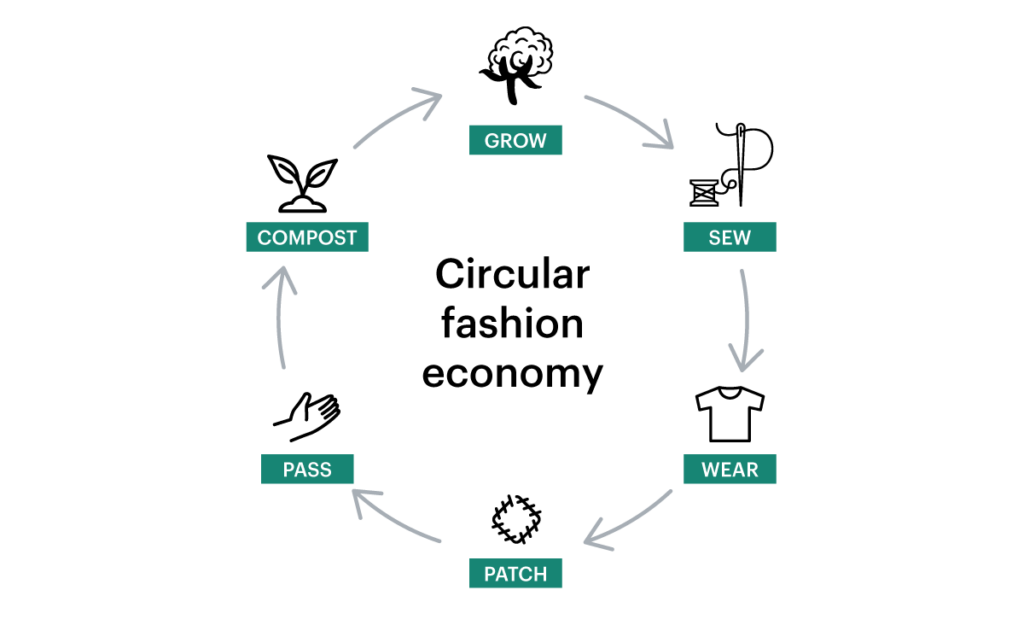Introduction to Circular Fashion: What It Is and Why It Matters
The fashion industry, long celebrated for its innovation and creativity, faces a pivotal moment. With escalating environmental concerns, resource depletion, and societal demand for more ethical practices, the linear “take-make-dispose” model is no longer sustainable. Enter circular fashion—an emerging paradigm designed to revolutionize how clothing is designed, produced, consumed, and disposed of. This comprehensive guide explores the fundamentals of circular fashion, its importance, and practical strategies for integrating it into the modern fashion industry.
Understanding Circular Fashion
Circular fashion is a regenerative approach to clothing and textile production that minimizes waste, extends product life cycles, and encourages resource efficiency. It is rooted in principles derived from the circular economy, which prioritizes keeping materials in use for as long as possible through recycling, upcycling, and innovative design.
Key elements of circular fashion include:
- Design for Longevity: Creating garments that are durable, timeless, and made with high-quality materials to withstand multiple uses.
- Resource Efficiency: Reducing water, energy, and material consumption during production.
- Waste Minimization: Implementing systems for textile recycling and biodegradability.
- Product Life Extension: Encouraging second-hand sales, repair services, and clothing rental models.
- Ethical Production: Ensuring that the entire supply chain adheres to socially responsible practices.
Why Circular Fashion Matters
The shift to circular fashion is not merely a trend—it is a necessity. The environmental and social impact of the traditional fashion industry is staggering:
- Resource Depletion: Producing textiles consumes vast amounts of water and non-renewable resources. For instance, growing cotton for a single t-shirt requires about 2,700 liters of water.
- Pollution: The textile industry is responsible for significant water pollution due to dyeing and finishing processes.
- Waste: Globally, over 92 million tons of textile waste are generated annually, much of which ends up in landfills.
- Carbon Emissions: The fashion sector contributes approximately 10% of global carbon emissions, surpassing the aviation and maritime industries combined.
Circular fashion offers a pathway to mitigate these issues by fostering a more responsible and sustainable fashion ecosystem.
Strategies for Implementing Circular Fashion
To successfully adopt circular fashion practices, industry stakeholders—from designers to consumers—must embrace innovative strategies:
1. Sustainable Design Principles
Designers play a critical role in shaping the sustainability of fashion products. By adopting circular design principles, they can create garments that are easier to repair, recycle, or biodegrade.
- Material Innovation: Use renewable, biodegradable, or recycled materials such as organic cotton, hemp, and recycled polyester.
- Modular Design: Create garments with interchangeable parts to extend their functionality.
- Cradle-to-Cradle Certification: Ensure products meet rigorous environmental and social sustainability standards.
2. Closed-Loop Production Systems
Fashion brands must invest in technologies that enable closed-loop production, where materials are continuously reused rather than discarded.
- Recycling Infrastructure: Develop partnerships with recycling facilities to recover textiles and transform them into new fibers.
- Chemical Recycling: Employ advanced techniques to break down synthetic fibers into their original components.
3. Business Model Innovation
Circular fashion necessitates reimagining traditional business models to prioritize access over ownership and longevity over disposability.
- Rental Services: Offer clothing rental platforms for high-end and special occasion wear.
- Subscription Models: Provide consumers with access to rotating wardrobes for a fixed fee.
- Resale Platforms: Facilitate peer-to-peer second-hand marketplaces.
4. Consumer Engagement and Education
Empowering consumers with knowledge and resources is essential for driving demand for circular fashion.
- Transparency: Provide clear information about the sustainability of products.
- Care Instructions: Educate consumers on how to properly care for their garments to extend their lifespan.
- Repair Workshops: Offer in-store or online tutorials for mending and upcycling clothing.
5. Policy and Regulation
Governments and regulatory bodies have a vital role to play in promoting circular fashion.
- Extended Producer Responsibility (EPR): Mandate brands to take responsibility for the entire lifecycle of their products.
- Incentives: Provide tax breaks and subsidies for sustainable fashion initiatives.
- Waste Management Legislation: Implement stricter regulations on textile disposal.
6. Collaboration and Partnerships
No single entity can achieve circularity alone. Collaboration across the value chain is critical.
- Cross-Industry Partnerships: Collaborate with technology companies, waste management firms, and NGOs.
- Knowledge Sharing: Participate in industry forums and networks to exchange best practices.
Case Studies of Circular Fashion Success
Several pioneering brands and initiatives are already demonstrating the viability of circular fashion:
- Patagonia: Known for its commitment to sustainability, Patagonia offers repair services and a resale platform called Worn Wear.
- Stella McCartney: A leader in sustainable luxury fashion, the brand uses innovative materials and promotes circular design.
- H&M’s Conscious Collection: Incorporates recycled materials and encourages garment recycling through in-store collection bins.
- The Renewal Workshop: Partners with brands to refurbish damaged clothing and resell it as renewed apparel.
The Role of Technology in Circular Fashion
Technological advancements are accelerating the adoption of circular fashion.
- Blockchain: Enables transparent tracking of a garment’s lifecycle from production to recycling.
- Artificial Intelligence: Optimizes inventory management to reduce overproduction.
- 3D Printing: Facilitates on-demand production and reduces material waste.
Conclusion: The Future of Circular Fashion
The journey towards a circular fashion industry is both challenging and promising. By embracing sustainable design, innovative business models, and collaborative efforts, the fashion industry can transform itself into a force for good—one that respects planetary boundaries and societal needs.
As consumers, policymakers, and industry leaders rally behind circular fashion, the potential for positive impact is immense. The time to act is now. By integrating these strategies and fostering a culture of sustainability, the fashion industry can lead the way in building a more resilient and equitable future for all.



